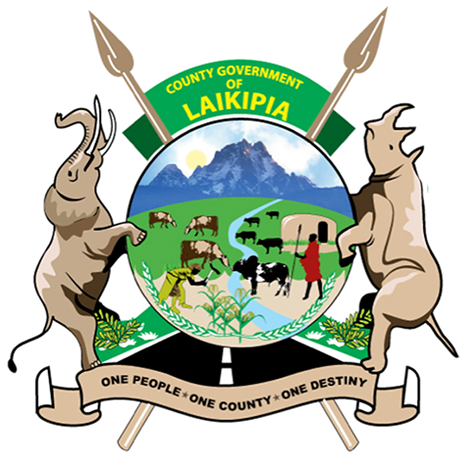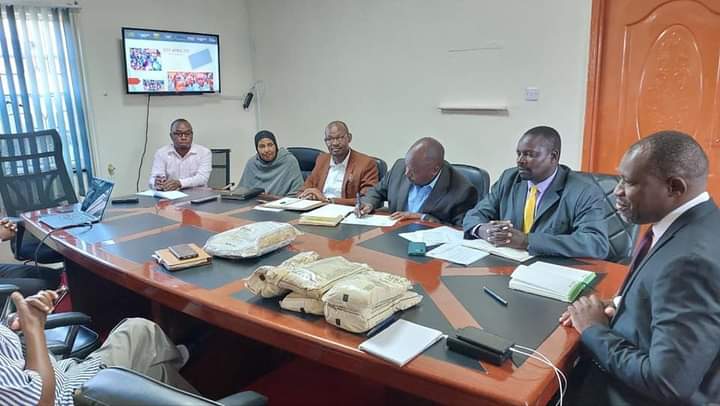How Laikipia Plans To Fight Hunger And Malnutrition In ECDE Schools Through A School Feeding Programme.
Updated on: Mar 06, 2023
The County Government is seeking development partners to raise funds, for emergency drought relief, to areas within the county that have been greatly affected by drought. In these efforts, H.E Deputy Governor Reuben Kamuri yesterday hosted a representatives from Soy Afric Ltd and Habitat for Humanity Kenya.
The Deputy Governor assured of the governments support to work with the organization for the benefits of Laikipians.
He requested thorough reports on the nutrition content that each child get per serving, aflatoxin analysis for food and safety, cost analysis for wholesale pricing, packaging details for quality control and an NDA report to aid the county in raising funds for the program.
He also tasked the county team led by CECM Education Kisorio and CEO LCDA Mr James Mugambi to fast-track the process of beginning the program immediately.
Dr Allan Mugambi, from Soy Afric Ltd assured the county team of his commitment to collaborate with the government and also bring on board the various development and donor partners the company works with to ensure the program is carried out effectively and on a larger scale. Soy Afric has a modern facility that can produce a total capacity of 80 metric tons per day on a 24-hour shift comfortably meeting the demand for their products.
Soy Afric is an indigenously owned Kenyan agro-processing company that commenced operations in 1994 in response to the urgent need by NGOs for relief food. The company currently runs school feeding and relief programmes in 15 counties and works with several donor and international companies such as UN, Red Cross, Feed the Children, AMREF, Doctors Worldwide, and USAID among others.
Dr Allan presented the company's products, which are viable options for providing a nutritious and affordable diet to address the constraints faced by many drought affected families in Kenya. Children in such households are at risk of developing or suffering from moderate malnutrition (stunting and wasting) due to poverty and food insecurity. The products introduced were:
Afya Mix: a precooked blend of Maize, sorghum, soya beans, and sugar and fortified with vitamins and minerals premix.
Tender Mercies: a carefully formulated mix of rice, fractured cow peas, full-fat soya, lentils, and salt enriched with vitamins and minerals.
The two products are low-cost, nutrient-dense meals specifically formulated to address the typical nutrition-deficient diet, particularly during famine, when food is scarce and are thus ideal for schools.
The Board Chairman for Habitat for Humanity Kenya Mr Kiragu Koome, who currently supports 1,200 pupils in Laikipia with the afya mix product urged the county to expedite the process as many school-going children and the elderly who are left with the kids are in urgent need of emergency relief food.
The Deputy Governor assured of the governments support to work with the organization for the benefits of Laikipians.
He requested thorough reports on the nutrition content that each child get per serving, aflatoxin analysis for food and safety, cost analysis for wholesale pricing, packaging details for quality control and an NDA report to aid the county in raising funds for the program.
He also tasked the county team led by CECM Education Kisorio and CEO LCDA Mr James Mugambi to fast-track the process of beginning the program immediately.
Dr Allan Mugambi, from Soy Afric Ltd assured the county team of his commitment to collaborate with the government and also bring on board the various development and donor partners the company works with to ensure the program is carried out effectively and on a larger scale. Soy Afric has a modern facility that can produce a total capacity of 80 metric tons per day on a 24-hour shift comfortably meeting the demand for their products.
Soy Afric is an indigenously owned Kenyan agro-processing company that commenced operations in 1994 in response to the urgent need by NGOs for relief food. The company currently runs school feeding and relief programmes in 15 counties and works with several donor and international companies such as UN, Red Cross, Feed the Children, AMREF, Doctors Worldwide, and USAID among others.
Dr Allan presented the company's products, which are viable options for providing a nutritious and affordable diet to address the constraints faced by many drought affected families in Kenya. Children in such households are at risk of developing or suffering from moderate malnutrition (stunting and wasting) due to poverty and food insecurity. The products introduced were:
Afya Mix: a precooked blend of Maize, sorghum, soya beans, and sugar and fortified with vitamins and minerals premix.
Tender Mercies: a carefully formulated mix of rice, fractured cow peas, full-fat soya, lentils, and salt enriched with vitamins and minerals.
The two products are low-cost, nutrient-dense meals specifically formulated to address the typical nutrition-deficient diet, particularly during famine, when food is scarce and are thus ideal for schools.
The Board Chairman for Habitat for Humanity Kenya Mr Kiragu Koome, who currently supports 1,200 pupils in Laikipia with the afya mix product urged the county to expedite the process as many school-going children and the elderly who are left with the kids are in urgent need of emergency relief food.

